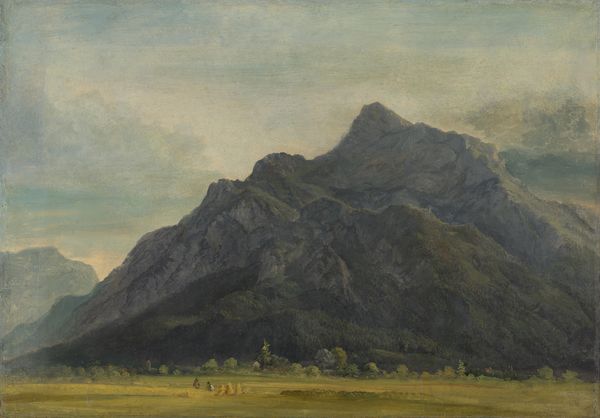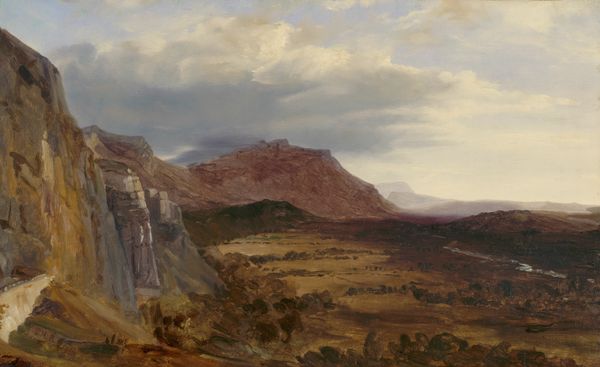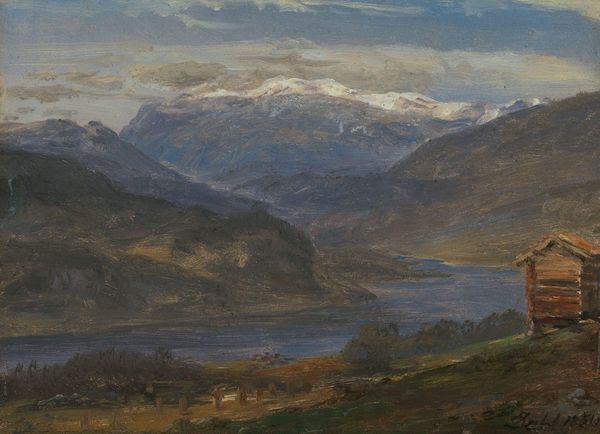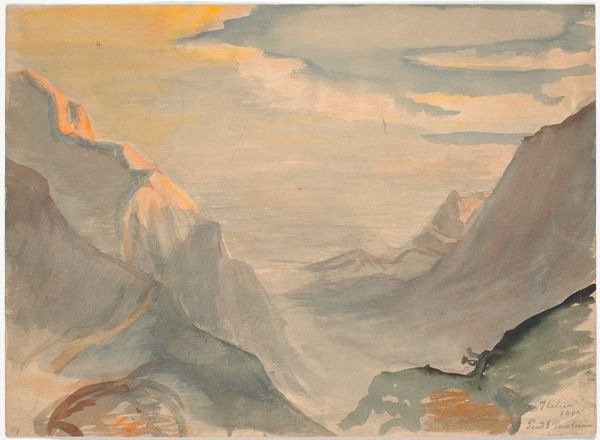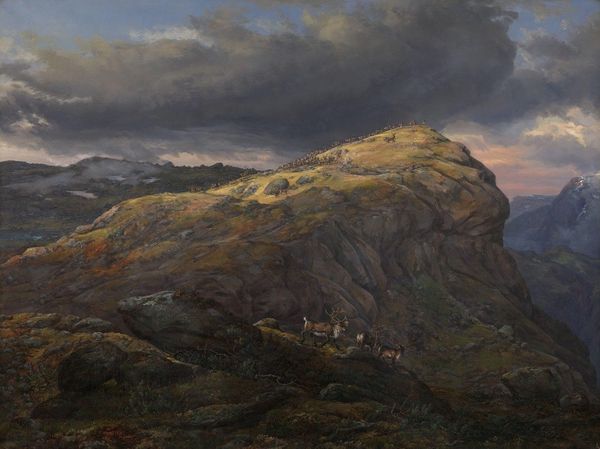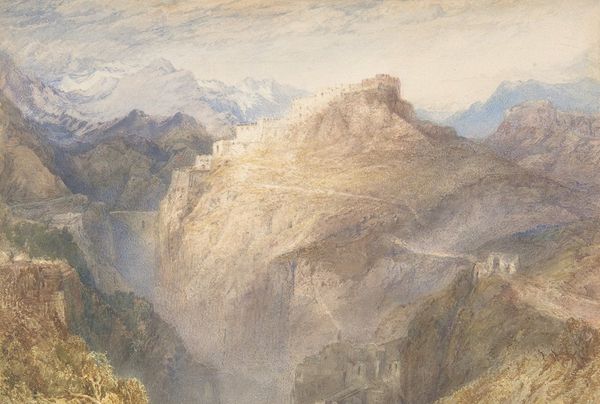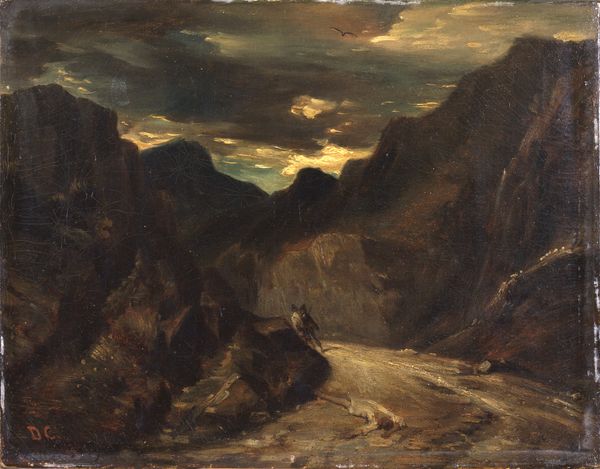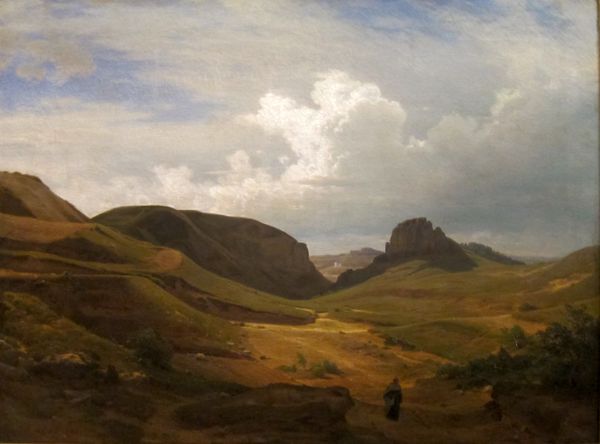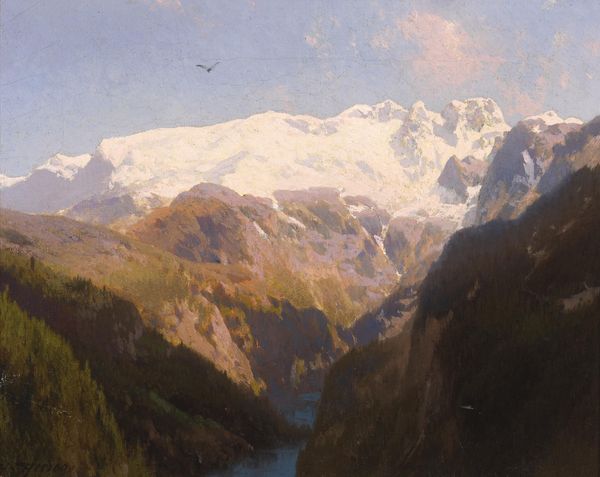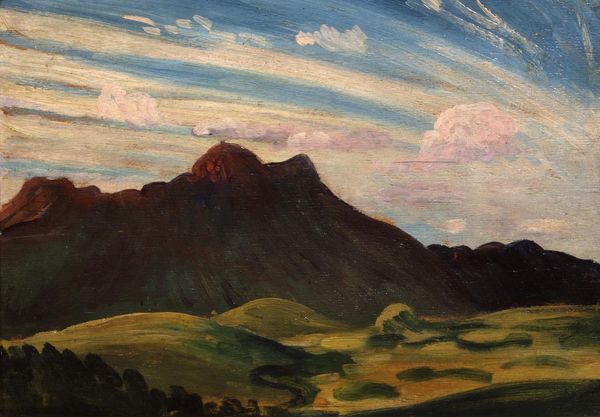
plein-air, oil-paint
#
plein-air
#
oil-paint
#
landscape
#
oil painting
#
romanticism
#
realism
Dimensions: 18.2 x 32.4 cm
Copyright: Public domain
Editor: "The Valley of Saint-Vincent" by Theodore Rousseau, created around 1830. This oil painting… it feels so atmospheric, almost dreamlike, with those soft, muted greens and blues. What story do you think Rousseau is trying to tell us with this vista? Curator: Well, it’s important to remember this piece emerges from a shift in the art world, particularly landscape painting. Before, landscapes often served as backdrops, supporting actors to grand historical or mythological scenes. Here, the landscape itself takes center stage. Editor: So it's a political statement to make landscape the main subject? Curator: In a way, yes. By the 19th century, with movements like Romanticism and Realism, there was a growing interest in portraying nature as it was, often with a sense of national identity intertwined. Rousseau, with the Barbizon school, pushed this. They rejected the idealized academic landscapes, embracing direct observation - painting *en plein air*, or outdoors. Notice the lack of narrative. How does that effect the viewer? Editor: I suppose that focuses attention on the purely visual experience. Without a specific story, it’s more about the feeling of the place, like being immersed in nature. The lack of people in the landscape is interesting. Curator: Exactly. This absence shifts the focus to the power and beauty of nature itself. This elevation of the French countryside gained prominence through national salons, exhibitions and museum culture. Think of it as Rousseau championing a specific version of French identity through its landscapes. What do you think are the implication of choosing this site as the “Valley of Saint-Vincent"? Editor: I'd never thought of a painting like this reflecting nationalism. Now, looking at how deliberately he seems to have framed it… It feels less passive and much more like a constructed, very deliberate statement. Curator: And that’s the power of understanding the context! Art is never created in a vacuum. By exploring these layers of history, politics, and cultural values, we can gain a far richer appreciation for the artwork. Editor: I'll definitely be viewing landscape paintings with fresh eyes going forward! Thanks for a whole new viewpoint.
Comments
No comments
Be the first to comment and join the conversation on the ultimate creative platform.
